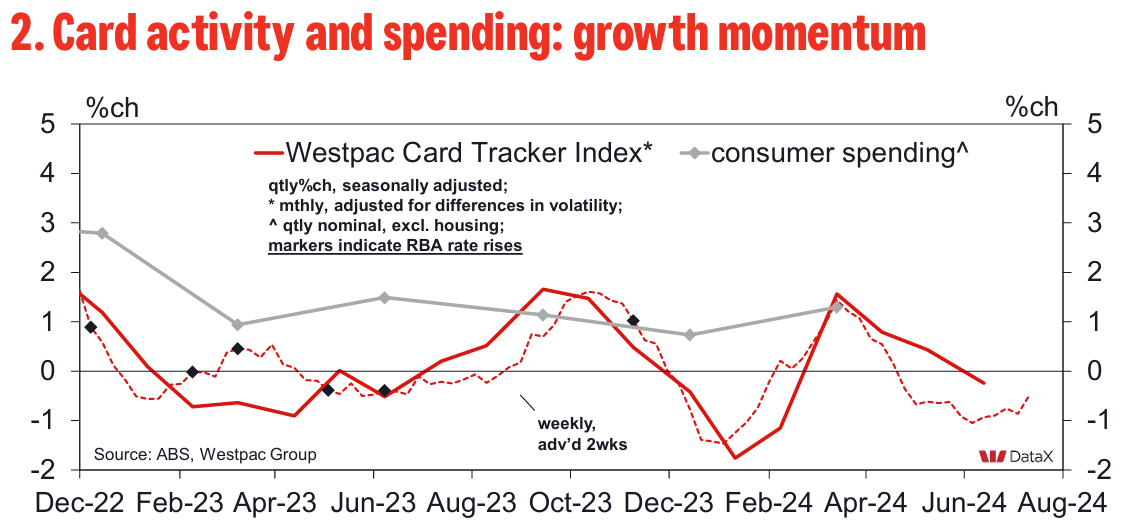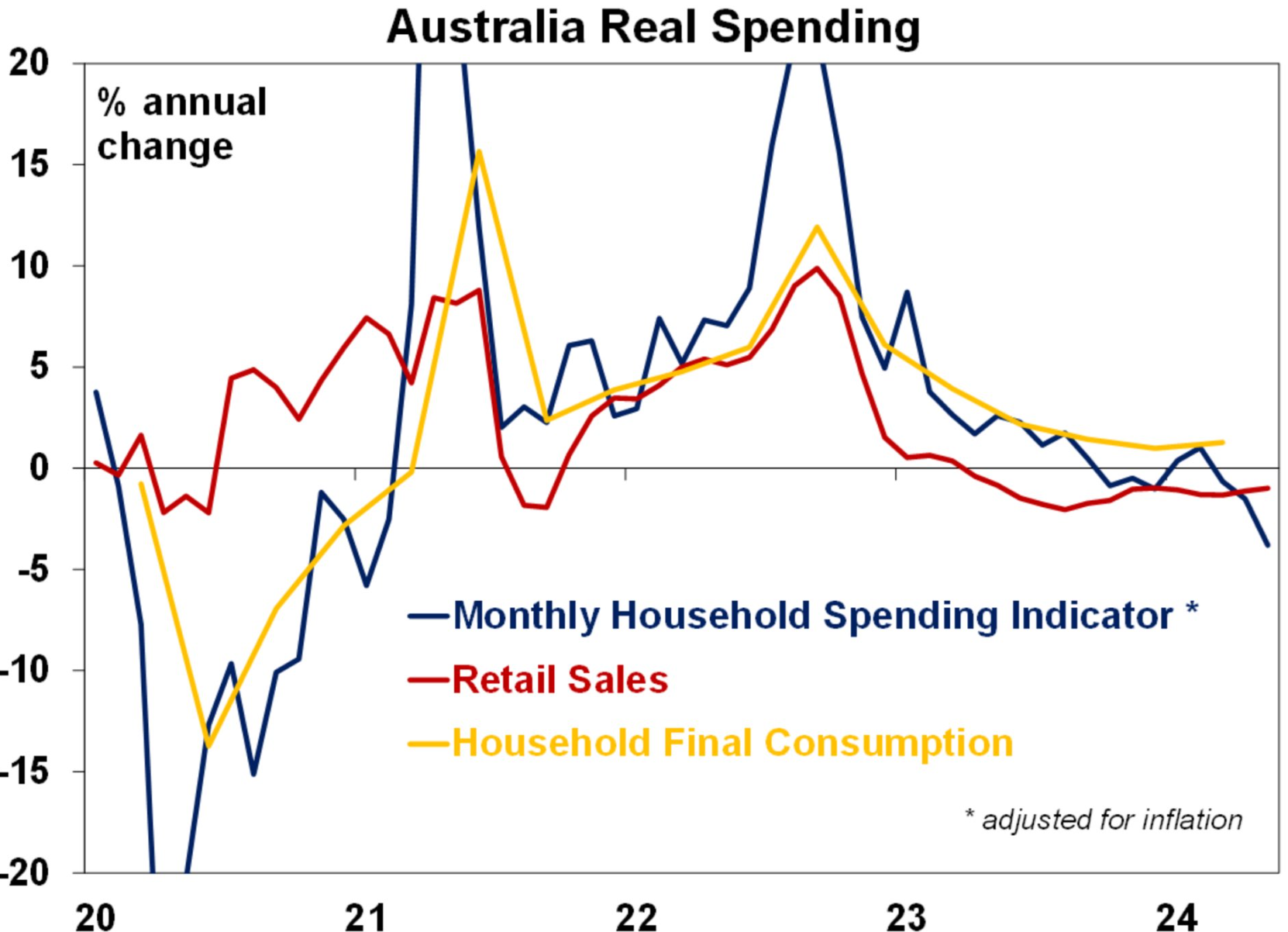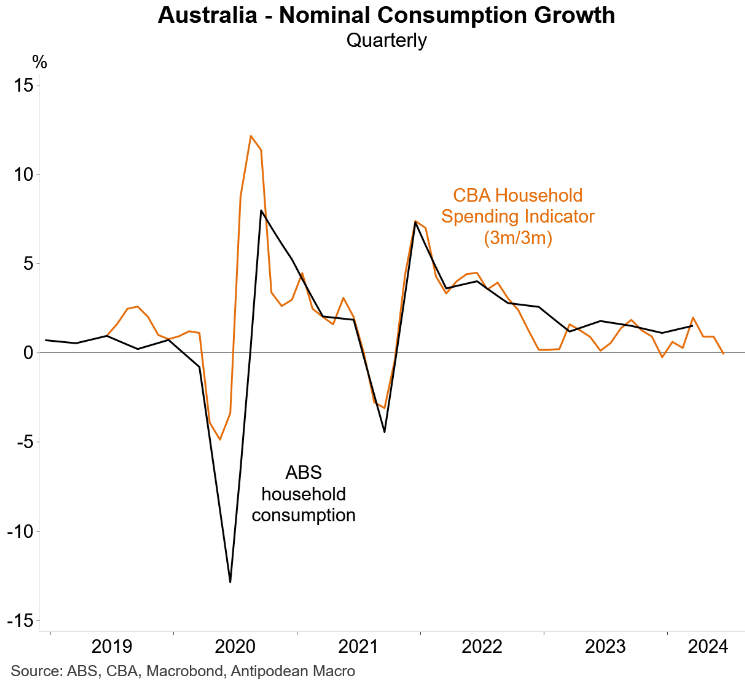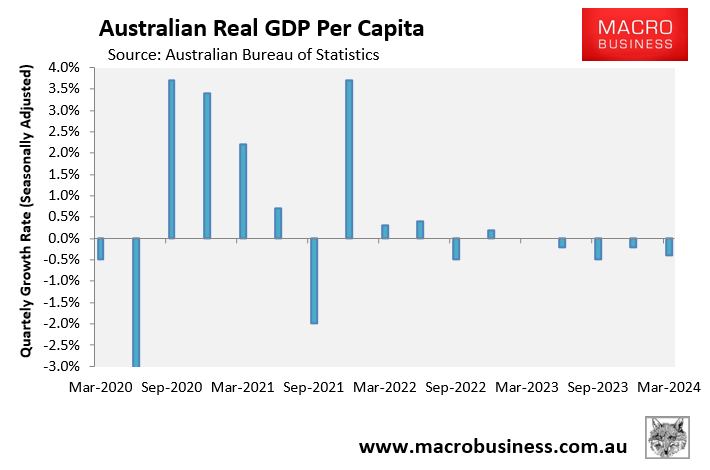The Stage 3 tax cuts have failed to brighten the mood of consumers, who remain locked in recession.
Last week’s ANZ-Roy Morgan consumer confidence survey recorded the second weakest result since early December 2023:

Net sentiment regarding the Australian economy in the longer term has collapsed to its lowest level so far this year:

On Friday, Westpac released its credit card activity tracker, which remained at recessionary levels:
The Westpac Card Tracker Index* has recovered somewhat over the first two weeks of July, rising 2.4pts to 134. While that brings the Index back to the level it was at in late May, the underlying growth trend remains weak with the renewed contraction that became evident in late April still intact.
![]()
Both monthly and quarterly growth measures remain in negative territory, tracking at –0.6%mth and –0.6%qtr respectively, in line with the pace seen in Q2…
The category detail also suggests there has been little or no discernible tax cut boost to date. Comparing the first two weeks of July with the same period last year, card activity is only up 2% – tracking behind both inflation (3.8%yr) and population growth (2.5%yr).
Current momentum points to a small 0.2% decline in Q2, a weak result, but a milder decline than the 1.3% fall recorded in Q4…

The latest ABS’ household spending indicator increased by only 0.1% over the year to May, suggesting a decline of around 6% in real per capita terms:

Source: AMP
CBA’s Household Spending Insights (HSI) indicator for June also suggested that consumption weakened over the June quarter:

As of Q1 2024, Australia’s GDP in per capita terms had decreased by 1.3% after five consecutive quarterly declines:

Given that consumer spending accounts for around 60% of Australia’s GDP growth, the aforementioned household expenditure indicators point to a continuation of the recession.
This also makes another rate hike by the Reserve Bank of Australia an economically risky idea.

